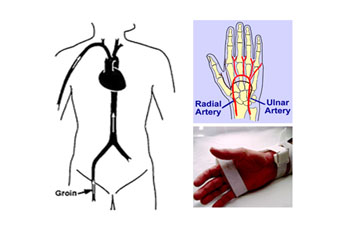Radial Access in Coronary Interventions Reduces Risk
By HospiMedica International staff writers
Posted on 12 Jul 2016
Researchers at the Humanitas Clinical and Research Center (Humanitas; Rozzano, Italy), Bern University Hospital (Switzerland), and other institutions searched PubMed, Embase, the Cochrane Central Register of Controlled Trials, and ClinicalTrials.gov databases for randomized trials comparing radial and femoral access for coronary interventions. In all, 24 studies enrolling 22,843 participants were included in order to provide a quantitative appraisal of t clinical outcomes when comparing access for coronary interventions in patients with CAD.Posted on 12 Jul 2016
The results showed that compared to femoral access, radial access was associated with a significantly lower risk for all-cause mortality, major adverse cardiovascular events (MACE), major bleeding, and major vascular complications. The rates of myocardial infarction (MI) or stroke were similar in the two groups. The effects of radial access were consistent across the whole spectrum of patients with CAD and for all appraised endpoints. The study was published on June 29, 2016, in JACC Cardiovascular Interventions.

Image: According to a new study, radial access for stenting procedures in coronary artery disease (CAD) patients should be the default approach (Photo courtesy of the Humanitas Clinical and Research Center).
“Overall, radial access was associated with a 29% relative risk reduction in all-cause mortality and a 16% relative risk reduction in MACE, compared with femoral access,” concluded lead author Giuseppe Ferrante, MD, PhD, of Humanitas, and colleagues. “The mechanism by which radial access is associated with reduced all-cause mortality, compared to femoral access, specifically whether this involves a reduction in the risk of major bleeding, requires additional studies.”
“Radial access is a newer procedure and it involves a longer learning curve to develop the technical skills necessary. However, as radial access is increasingly adopted, benefits seen in trials have been weighed against the learning curve necessary for some operators,” commented Spencer King, MD, editor-in-chief of JACC Cardiovascular Interventions. “This most complete analysis of the value of radial access may convince some doubters to switch.”
Related Links:
Humanitas Clinical and Research Center
Bern University Hospital














